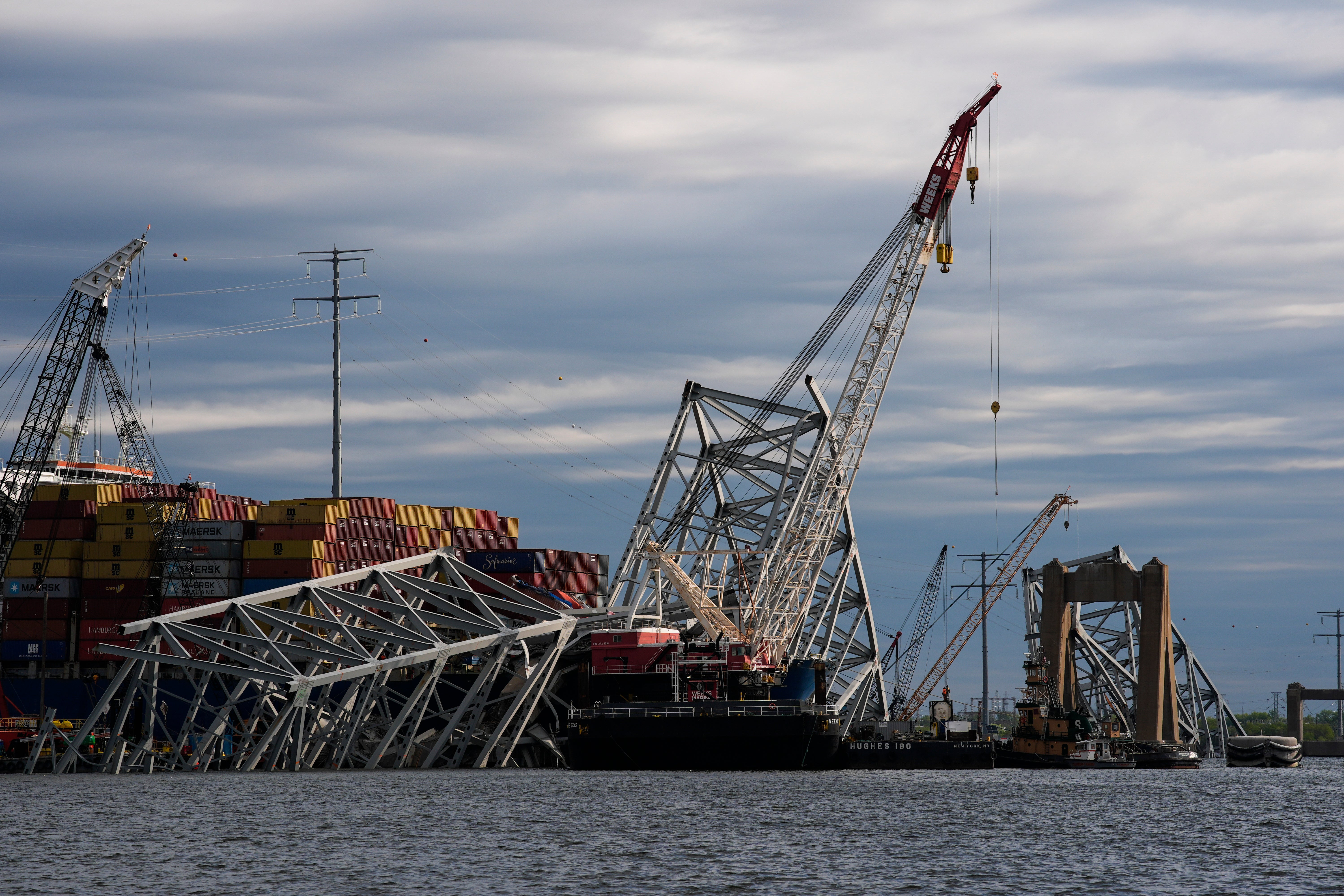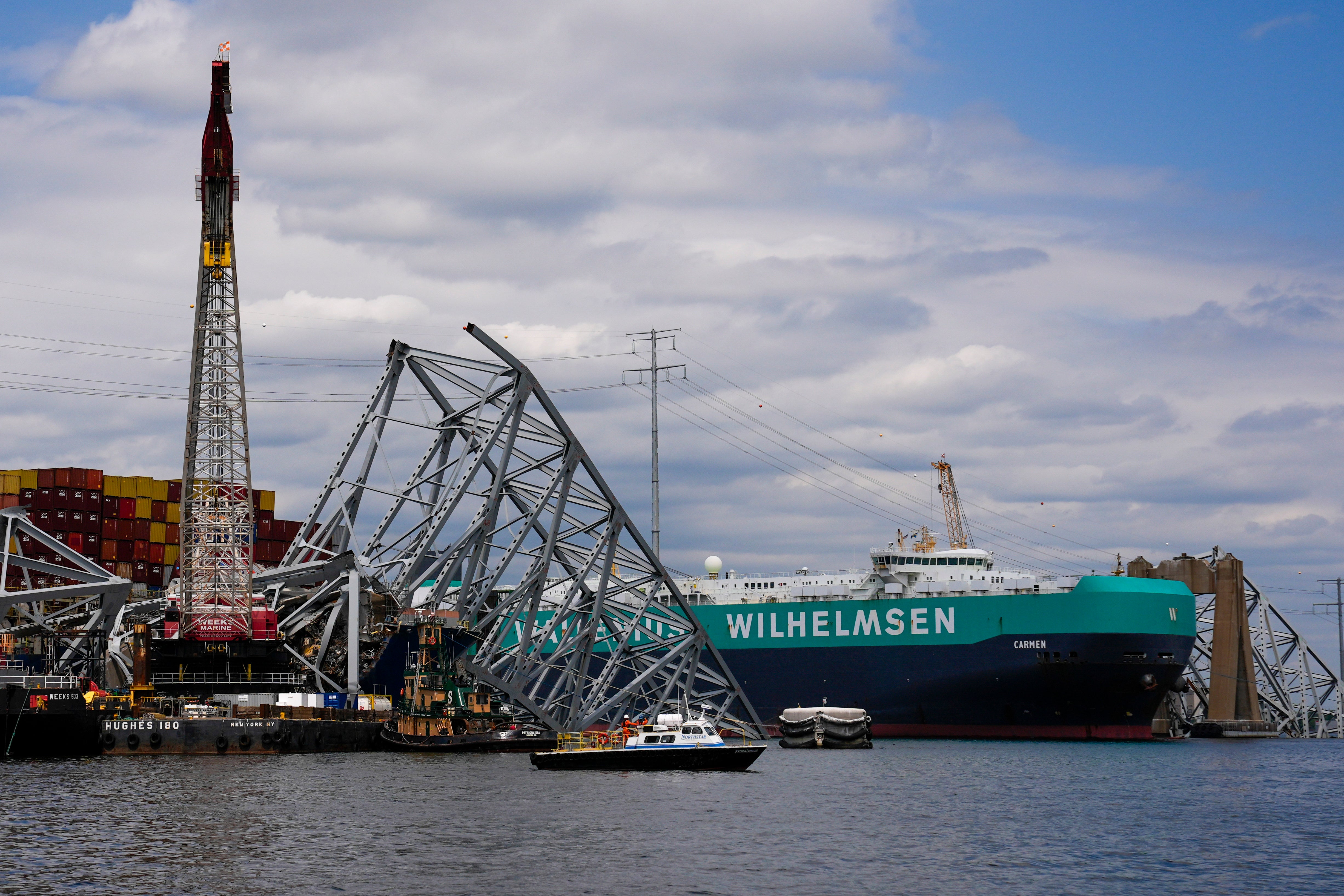Authorities reveal what next for the ship that brought down Baltimore bridge
The ship has been stationary amid the wreckage since the March 26 collapse
Authorities have revealed what they plan to do with the chip at the centre of the Baltimore bridge tragedy.
Six members of a roadwork crew plunged to their deaths in the disaster. Four bodies have been recovered while two remain missing.
At the site of the Francis Scott Key Bridge collapse, crews plan to refloat and remove the grounded Dali container ship within roughly the next 10 days, allowing more maritime traffic to resume through Baltimore’s port.
The ship, which lost power and crashed into one of the bridge’s supporting columns, has been stationary amid the wreckage since the March 26 collapse. Officials expect to have it removed by May 10, according to a news release Tuesday from the Port of Baltimore.
Crews have identified “areas of interest” where they believe the bodies could be, but they’ve been unable to access them so far, Maryland State Police Superintendent Roland Butler said during a news conference Tuesday afternoon.
“We’re working in generalizations of areas where we think they should be, based on sonar images and other mapping techniques,” he said.

Officials declined to provide a projected timeline for how long the cleanup will continue and when the victims’ families can expect to be made whole. So far, 3,300 tons of debris have been removed from the Patapsco River.
“What we know is that we’re putting forth every single asset that we have at our disposal to bring closure to these families,” Gov. Wes Moore said during the news conference.
Last week, officials opened a temporary deep-draft channel that allowed some stranded cargo ships to finally leave the Port of Baltimore. Others entered the port through the channel, which closed Monday so crews could focus on extracting the Dali from the wreckage.
A large span of the steel bridge came crashing down on the Dali’s bow, damaging the ship and destroying some of its containers. Removing those pieces of bridge is the next major priority in the cleanup process, officials said.

“That work is remarkably complicated,” Moore said, because cutting the spans into shorter sections could risk destabilizing other pieces of wreckage.
Crews are using the largest hydraulic grabber in the country to help in that effort, he said.
Once the Dali returns to port, officials said they expect to open a 45-foot channel by May 10 that can accommodate more large cargo ships. They plan to fully restore the port’s 50-foot main channel by the end of May.
Thousands of longshoremen, truckers and small business owners have seen their jobs impacted by the collapse, prompting local and state officials to prioritize fully reopening the port in hopes of easing the economic ripple effects of the collapse. Officials have also established various assistance programs for unemployed workers and others impacted by the closure.
Bookmark popover
Removed from bookmarks